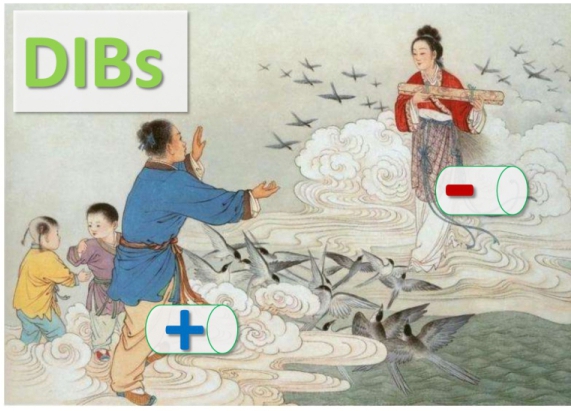Anions and Cations in DIBs Practices Like the Cowherd and the Weaver Girl
Date:25-03-2019 | 【Print】 【close】
Dual-ion batteries (DIBs), in which both cations and anions involve in the electrochemical redox reaction, are one of the most promising candidates to meet the low-cost requirements of commercial applications, compared with conventional LIBs, it has merits like high working voltage, excellent safety, and environmental friendliness.
A research team led by Prof. TANG Yongbing at the Shenzhen Institutes of Advanced Technology (SIAT) of the Chinese Academy of Sciences (CAS), in collaboration with the academician of CAS, Prof. CHENG Huiming from Tsinghua-Berkeley Shenzhen Institute, Tsinghua University and Prof. JI Xiulei from Oregon State University, USA, jointly published a invited review article which titled “Beyond Conventional Batteries: Strategies towards Low-Cost Dual-Ion Batteries with High Performance” on the journal of Angew. Chem. Int. Ed. 2019.
DIBs has attracted worldwide attention on account of high working voltage low cost, easy recycling environmental protection, and other advantages. However, due to the compaction density graphite and their limitation of the theoretical capacity, the traditional double carbon structure of DIBs has a low energy density.
In 2016, Prof. TANG’s group has designed a novel aluminum-graphite DIBs, practiced the idea of integration of electrode, and used aluminum foil, which is cheap and plentiful environmental protection, as the cathode active material and fluid collection at the same time, with the graphite anode material to build the new high efficiency low cost of aluminum - graphite DIBs system.
Like the cowherd and the weaver girl, a classical fairy story in China, two lovers can only meet on a magpie bridge in the sky at July 7th every year, compare the cowherd and the weaver girl to the anion and cathode, the magpie bridge can be seen as ion channel. Two lovers are separated by the vast Milky Way Galaxy (which is electrolytes) normally, with the help of this magpie bridge, they meet each other (charge), then they will go back to their own places (discharge), this gathering is running in cycle repeatedly.

Anions and cations in DIBs compare to the Cowherd and the Weaver Girl (Image by Prof. Tang Yongbing)
So the main differences between DIBs and LIBs can be summarized as:

The differences between LIBs (a) and DIBs (b) (Image by Prof. Tang Yongbing)
In the aspect of new double ion battery technology, it is difficult for them to improve the volume change of aluminum foil anode during charging and discharging.
Successively developed carbon anode materials coated porous aluminum foil new aluminum anode materials and high-performance hollow interface microstructure through the study of the structure of the aluminum foil cathode design and interface control, the team effectively solve the cheap metal anode materials in the process of charging and discharging volume expansion cycle problem of poor performance, laid a very solid foundation for the industrialization.
Based on the above technologies, the team has applied 89 invention patents, 23 PCT, 2 American patents, 2 European Union patents, 2 Japanese patents and 2 South Korean patents. The new battery has entered the trial production stage, and completed the technology transfer.
"Scientific research have no the end, if we don't forward, we will fall behind. If we don't focus on the future and speed up the layout, the opportunity may be fleeting.” Prof. TANG said. “I hope to make valuable scientific research achievements in Shenzhen.”